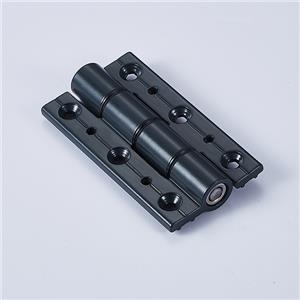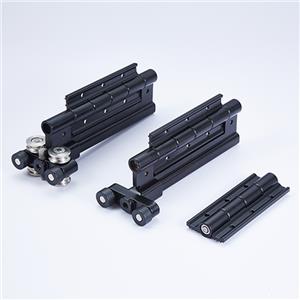Types of aluminum door hinges
There are many types of aluminum door hinges, each with different uses. In this article, we will explore the different types of aluminum door hinges, including butt hinges, continuous hinges, pivot hinges, and concealed hinges. Understanding these hinge types will help you choose the right hinge for your aluminum door.
Aluminum door hinges play a vital role in the function and performance of your door. They provide stability, smooth movement, and secure closure for all types of doors. In this article, we will explore the different types of aluminum door hinges, focusing on their features, benefits, and applications.
Butt hinges: Butt hinges are the most common type of hinge used for doors. They consist of two pieces of hinges connected by a pin or joint. One piece of hinge is attached to the door frame, and the other piece is attached to the door itself. Butt hinges provide a simple and durable solution for both interior and exterior doors.
Continuous hinges: Continuous hinges, also known as piano hinges, extend the entire length of the door. They provide continuous support and evenly distribute weight, making them ideal for heavy doors or doors that require extra stability. Continuous hinges are often used in commercial and industrial applications.
Pivot hinges: Pivot hinges enable doors to swing on a pivot point instead of a traditional hinge. They are often used for large, heavy doors or doors that need to swing in both directions. Pivot hinges can be mounted to the floor or hidden within the door and frame, providing a sleek, modern look.
Concealed hinges: Concealed hinges, also known as invisible hinges, are designed to be hidden from view when the door is closed. They are recessed into the door and frame, providing a clean, seamless look. Concealed hinges are often used in high-end residential and commercial projects where aesthetics are important.
Euro hinges: Euro hinges, also known as cup hinges, are often used on cabinet doors. They are adjustable, featuring a cup-shaped mounting plate that attaches to the door and a hinge arm that attaches to the cabinet. Euro hinges are easy to install and can be adjusted to ensure proper alignment and smooth operation.
Friction hinges: Friction hinges are often used on windows, especially casement or awning windows. They provide controlled resistance, allowing windows to remain open at a variety of angles without the need for additional hardware or support. Friction hinges provide draft control and stability in windy conditions.
Self-closing hinges: Self-closing hinges come with a built-in mechanism that automatically closes once the door is opened. They are often used in commercial settings, such as offices, restaurants, and healthcare facilities, to ensure that the door is always closed for privacy, security, and energy savings.
Spring hinges: Spring hinges are designed to automatically return the door to the closed position. They have an internal spring that creates tension when the door is open, allowing it to close smoothly. Spring hinges are often used in residential and commercial applications that require self-closing doors.
In summary, choosing the right type of aluminum door hinge depends on factors such as the type of door, weight, architectural design, and desired functionality. Understanding the different types of aluminum door hinges will help architects, builders, and homeowners make an informed decision to ensure that the door operates smoothly and safely.
WSMT supply premium quality aluminium accessories for windows and doors.
Welcome to contact us: whatsapp/Wechat/Zalo+86 150 156 88141
Email:catherine@weisidunwj.com




